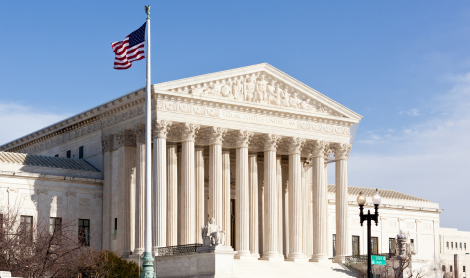As National School Choice Week concludes, I have been thinking a lot about what it will take to make school choice a reality for all children in America and not just a privilege afforded to some.
There is much to celebrate, given more families have a choice in where to send their children to school than ever before. The growth of charter schools and the explosion in their enrollment over the past 25 years is clear evidence that parents want choices when it comes to their children’s education. A recent poll of likely voters conducted by Beck Research and commissioned by the organizers of NSCW found that 69 percent of Americans support giving families the right to use their child’s allotted tax dollars to exercise school choice. The pollsters noted that public charter schools are particularly popular with voting Americans, with 76 percent in favor and only 20 percent opposed.
I celebrate this week, therefore, the fact that millions of families have educational choices today that so many of their parents lacked. I laud the fact that the students who are benefiting most today from school choice—low-income students of color in urban districts—are students for whom America has for generations failed to provide a quality education.
I celebrate the fact that students who would otherwise be forced to attend a school that may not meet their needs, are thriving in highly-effective charter schools that have the flexibility to design and operate programs best suited for their students and that are accountable for performance.
Yet at the same time, I remember this week that there are still millions of children in America who lack the ability to choose a quality school, either because their district will not allow open enrollment in an equitable or transparent way or because the choices they do have are already full or not worth choosing.
I remember that there are still many places in America—entire states—where the only way to choose a school is to pay for a private one, test into a magnet school, or falsify your residence so that your child can attend a school where people don’t assume from the start that you are doomed to a second-class education.
I remember that in too many places where school choice is actually available to families, space in quality schools is scarce and there is often little accountability for schools that fail to educate their students, so long as they can enroll them and keep parents happy.
Which is why I hope that amidst all the celebration this week, and in the months and years ahead, the 69 percent of my fellow Americans—researchers, advocates, and everyday citizens and parents alike—will remember that school choice is not an end in itself but a means to providing quality education to as many children as possible.
At NACSA, we believe every child deserves the opportunity to attend an excellent school and that school choice is a critical strategy in making that ideal a reality. We also believe that school choice works best when schools are given the autonomy they need to succeed and held accountable for the outcomes they produce, including how open they are to all students and how well they manage public funds.
School choice has transformed education in America, but so far that transformation has touched only a small number of the children who need choice most and hasn’t produced nearly enough quality schools to meet demand. In places where choice is proliferating most, parents, schools, and public officials are struggling with how to harness its power without smothering it with regulation or leaving the most vulnerable families to fend for themselves.
We can advocate for school choice for one week or all day, every day, but this alone will not ensure that all children have opportunity to attend a great school. If we wish to use choice as a tool to transform education not just for some students but for all, then we have to not only advocate for its expansion, but also confront the very real challenges that choice creates for the lives of children and their families, as well as those charged with ensuring that all children will be educated at the public expense.
In the first 25 years of the charter school movement, we have seen what is possible when a top-down, command-and-control system that—by design—relies on limiting choice is disrupted by schools that students choose. We’ve seen schools that no longer have to use the same math textbook as every other middle school, or follow the same schedule. We’ve seen schools find creative ways to get around inane rules no one takes seriously in the first place.
But more importantly, we’ve seen that where they are most effective and where they are achieving real scale, charter schools are truly reshaping how public education is delivered in communities. They are teaching kids who would otherwise languish in schools not designed or operated to meet their needs how to read, how to do advanced calculus, and how to be the first in their family to go to college. In these communities—places like Boston, Denver, Los Angeles, New Orleans, and Washington, DC—charter schools have changed the life trajectories thousands of students for the better. And as a result, an entire generation of low-income students of color, educated by America’s best charter schools, is on the rise.
These successes were made possible in part by school choice, but just like charter schools aren’t any kind of silver bullet or purple unicorn, school choice in and of itself is insufficient to provide all children with a quality education.
The disruption that school choice creates in systems designed to minimize it is real and already upon us. For some ideologues, this disruption is itself the goal. But for children and families, and everyone else who actually cares about whether all children have access to a great school, the question before us now is what comes after this disruption.
My former boss is right: If we’re serious about using school choice to provide a quality education to all children at the public’s expense, then ideology will not get us there. We need real equity and real accountability. My current boss has said it well: “When you strip away all the rhetoric and ideology shaping the public debate around charters, the case for charters remains straightforward: the best of them work very well and parents clearly want options.”
My friends at the Center for Reinventing Public Education are also right: School choice doesn’t happen by itself and quality charter schools don’t just sprout out of thin air, at least not at scale. Giving some or all parents school choice doesn’t spontaneously create a quality market for schools that is open to all, transparent about its participant’s performance, and structured so that costs, rights, and responsibilities are balanced fairly. Making school choice work for all kids takes real work.
The transformation made possible by school choice and accelerated by high-performing charter schools has only just begun. As anyone in a community where choice is flourishing will tell you, moving from a system where students are assigned to a school by default to one where choice is the norm is a treacherous road filled with lots of risk that some students will be left behind or the public trust will be violated.
In many ways, the success of the transformation we are in depends on how well charter school authorizers carry out their responsibilities. Authorizers are well equipped to help families and the public navigate in this new world. Authorizers aren’t just responsible for ensuring that only school applicants with promise are granted a charter, they are responsible for ensuring only effective schools are renewed and that failing schools are closed. Authorizers are also responsible for giving schools the flexibility they need to meet the needs of their students and for protecting student rights and the public interest.
As charter schools continue to proliferate and as more and more families have a choice in where to send their children to school, quality authorizing will only become more important. Families, schools, and the public will all depend on authorizers to be active, pragmatic, humble, and creative.
Fortunately, responsible advocates of school choice and charter schools are increasingly recognizing the importance of high-quality authorizing and are joining NACSA in our efforts to support policies and practices that promote it. More and more districts—the vast majority of authorizers—are coming to see that good authorizing is good for kids and good for the district. And finally, a long overdue debate is emerging within the school choice community about how to strike the right balance between freedom and access for families, flexibility for schools, and our national commitment to ensure that every child, no matter the challenges they or their families face, needs and deserves the opportunity to obtain a quality education.
School choice and charter schools are here to stay and will only grow. Whether this transformation will provide quality educational opportunities to the millions of America’s children who currently lack them depends on our willingness to put ideology and rhetoric aside and focus on the hard questions and hard work ahead.


